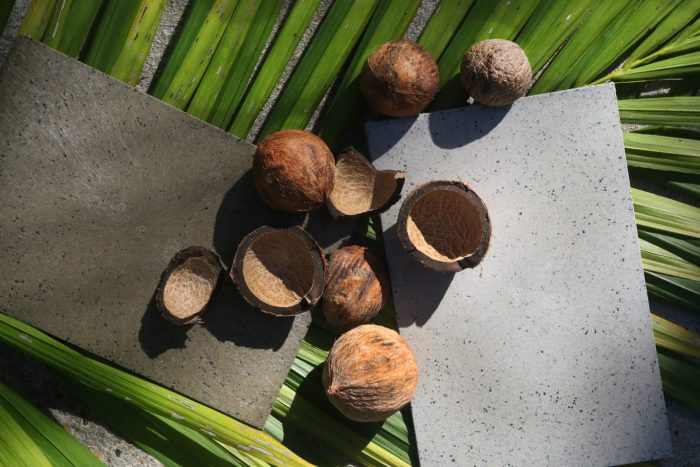SPECIAL | An economy for tomorrow – Amazonian Treasure
18 de September de 2021

Bruno Pacheco – from Cenarium
MANAUS – The wealth of the Amazon is a precious asset that can guarantee financial return to the region’s inhabitants and a better future, if enjoyed in a sustainable way, protecting the forest. For this reason, researchers and entrepreneurs have idealized innovative and bioeconomic projects for the development of traditional and riverside communities.
One of these projects is the one idealized by artisan and jewelry designer Rita Brasil Mendonça, 54, who owns the Rita Prossi brand, with products developed by riverside communities and indigenous people.
“I took a course in jewelry design, learned how to draw and recognize the stones, until a person came and asked me for a piece to take to her daughter in the United States, as a way to kill her nostalgia for Amazonas”, she said.
Thus, Rita produced jewelry in the shape of a turtle, a canoe, and a bow and arrow. The miniature replicas were made with the help of indigenous people from the Waimiri-Atroari people, because they have the arumã straw, known for its resistant fiber, the material used by Rita to form the necklace with the precious jewels.
The material also included some gold, açaí seeds and a tucumã ring, molded by a Sateré-Mawé indigenous person and decorated by Rita. “Upon arriving in Boca Raton, Florida, the Americans loved the product. As a result, a client became one of my resellers at the time”, she pointed out.

Currently, the jewelry is made by the hands of indigenous and riverine artisans, who do the initial work of cleaning and cutting the tucumã, for example, until the products reach Rita, who does everything from sanding and polishing the material to the personification of the pieces. A productive chain that guarantees income for all involved.
The pieces are nationally known; one of her collections, called “Pena do Gavião-Rei”, in english ‘Royal Hawk Feather”, was offered to the heir number one of the British crown, Prince Charles, during a visit to the Amazon, in 2009. At the request of the Superintendence of the Manaus Free Trade Zone (Suframa), the artisan developed a piece of jewelry for the Duchess of Cornwall, Camila Parker Bowles.
The bio-jewels have also been offered to the Prince of Monaco, Albert II, who received a paper weight made with silver, pupunheira wood and tucumã seeds. Pope Benedict XVI was also presented with a cross made of arumã straw and silver. The collections are also used in fashion shows, such as the Miss Brazil Pageant.
Plastic wood made from the tucuma stone
The tucuma is a nutritious fruit that is widely used in the cuisine of Northern Brazil. Its hard, smooth skin is green in color, while the pulp is oily and yellow or orange in color. The species, harvested from a thorny tree that can grow to more than 20 meters in height, has a stone located in the center of the fruit.
Thinking about this possibility and to prevent the seed from being discarded, professor doctor Antonio Claudio Kieling, from the Amazonas State University (UEA), began to study the species and better understand the potential of the tucumã, developing the project “Plastic wood made with tucumã stone”, for his doctoral thesis in Biotechnology at the Federal University of Amazonas (Ufam) in 2018.
"Upon arriving in Boca Raton, Florida, Americans loved the product [bio-jewelry]", says Rita Brasil Mendonça, 54, jewelry designer and owner of the Prossi brand.During the research process, it was discovered that 92% of the product is discarded in Manaus and the average volume of consumption of tucumã by the population is around 100 tons per month. Whether as a tapioca filling, ice cream flavor or in other food varieties. Of this total, 50 tons of stone are thrown away. With this amount, it would be possible to obtain tons of wood powder.
“So, you could use the shell [of the tucumã] to make compost, the pulp to make ice cream, tapioca, butter, and the stone is left over. The almond, inside, can be pressed and an essential oil used in the cosmetics and pharmaceutical industry can be extracted from it, while the stone is used to make this composite material, adding a recycled plastic, and that is used to make plates, parts and certain objects that go through several different manufacturing processes”, explained Kieling.
Process
The manufacturing process begins by breaking the lump and occurs through extrusion, when the material is forced out through a hole and gets a predetermined shape for the piece. The wood production can also be done by means of an injection molding machine or by thermoforming, a processing method that uses hot air and pressure to make the molding.
“To have an idea, plastic recycling here in Manaus throws away around R$ 50 million per year, when we could recover half of the material that is thrown away through an organized collection process, generating jobs and income to sell the ground material at market price”, highlights the professor.

